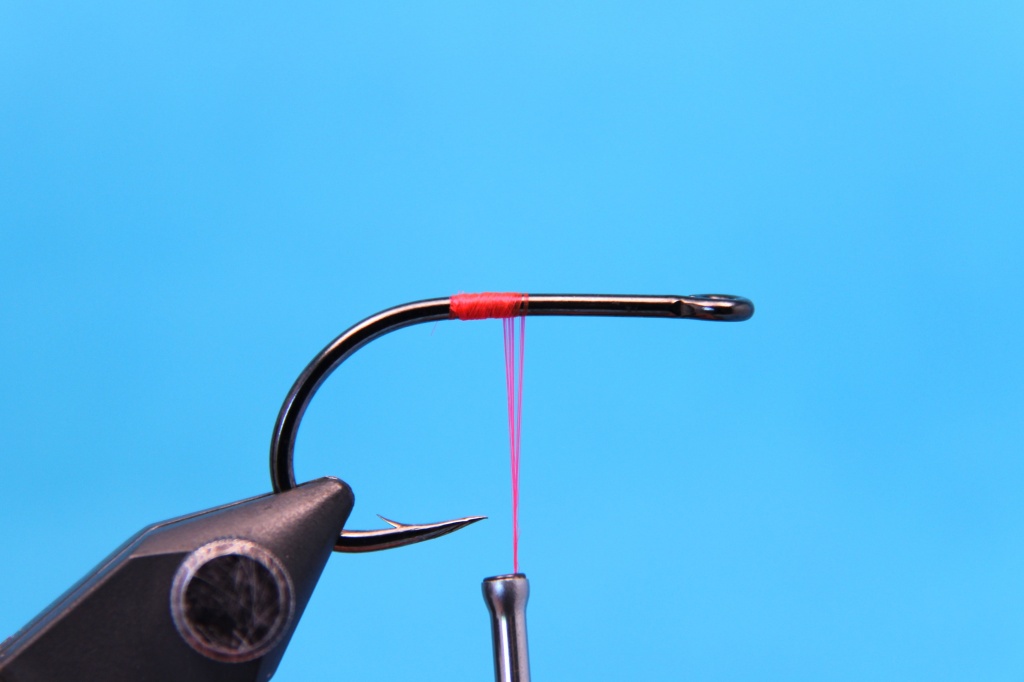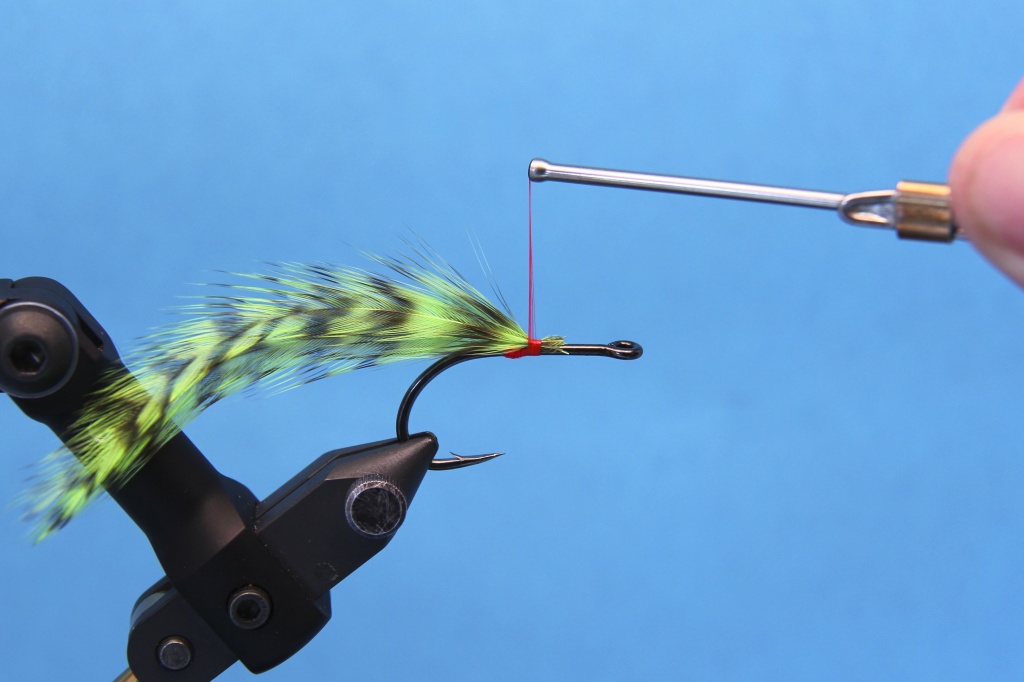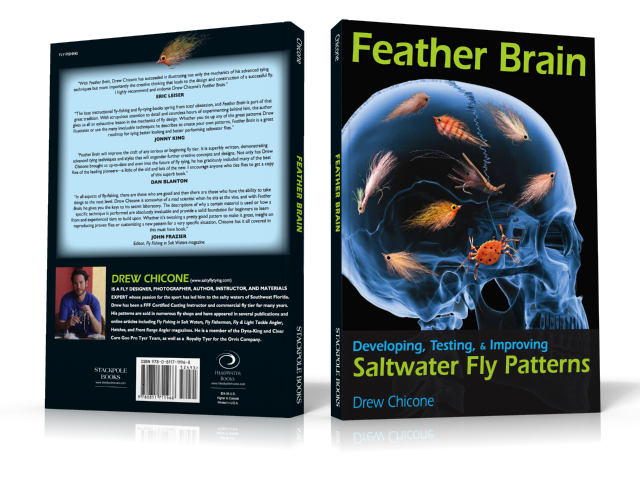Although thread diameter seems like a minuscule thing, the size and shape of your thread can make a big difference in the way your flies look and fish. Heavier, stronger threads with multiple filaments or higher denier are common when creating larger, more durable saltwater flies, but is 210 denier necessary? As you tie more, and you become accustom to the amount of thread pressure you need to apply for a given material you will find that lighter threads will produce tidier looking flies with more uniform heads.
This is the eighth installment of Feather Brain by Drew Chicone. To read more about thread control, Visit my website Salty Fly Tying to order your signed copy of Feather Brain today! $24.95 + Shipping
Whether you need to flatten or condense the fibers will depend on the intended intended use and desired outcome. A flattened thread is far more useful the majority of the time and is critical for gathering slick materials, creating a thread bump, thread dam, or building up the head of a tarpon fly, so get in the habit of spinning your bobbin between materials!
Over the next few months I will give you the basics on designing your own patterns, tying with saltwater materials, and fixing typical problems. I will also discuss my process for Developing, Testing, and Improving Saltwater Fly Patterns . As always, you can stay tuned to this blog each week as I share pieces from my book, but for the complete 176 page paperback copy of Feather Brain with step-by-step tying instructions and explanations of how I designed my 14 winning saltwater flies, and insights from nine top saltwater fly tiers, including Bob Clouser, Jonny King, Bob Popovics, and Chris Helm and many more.
Click on the book below to order your signed copy today!



